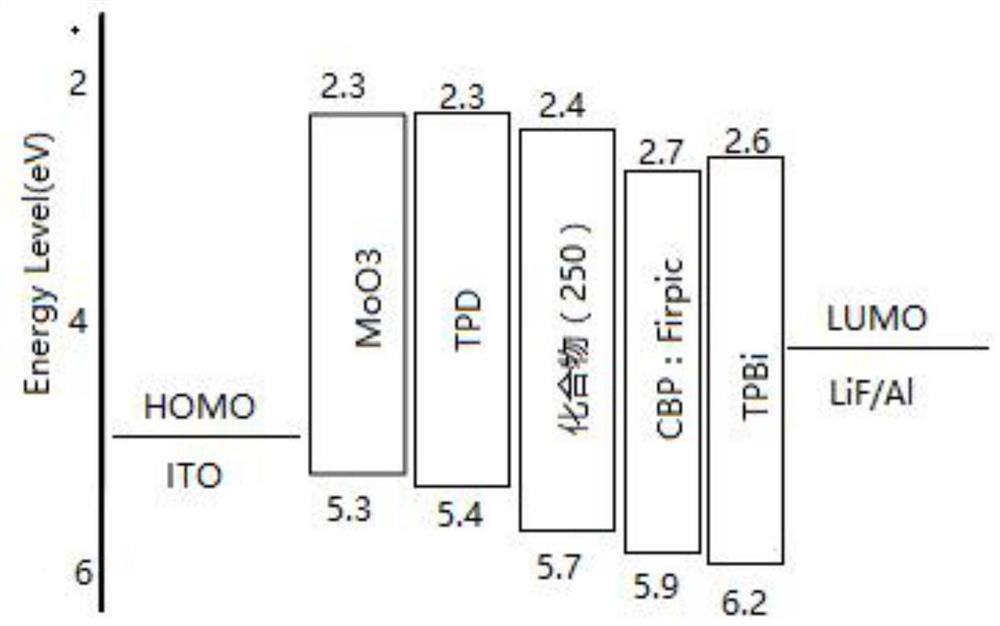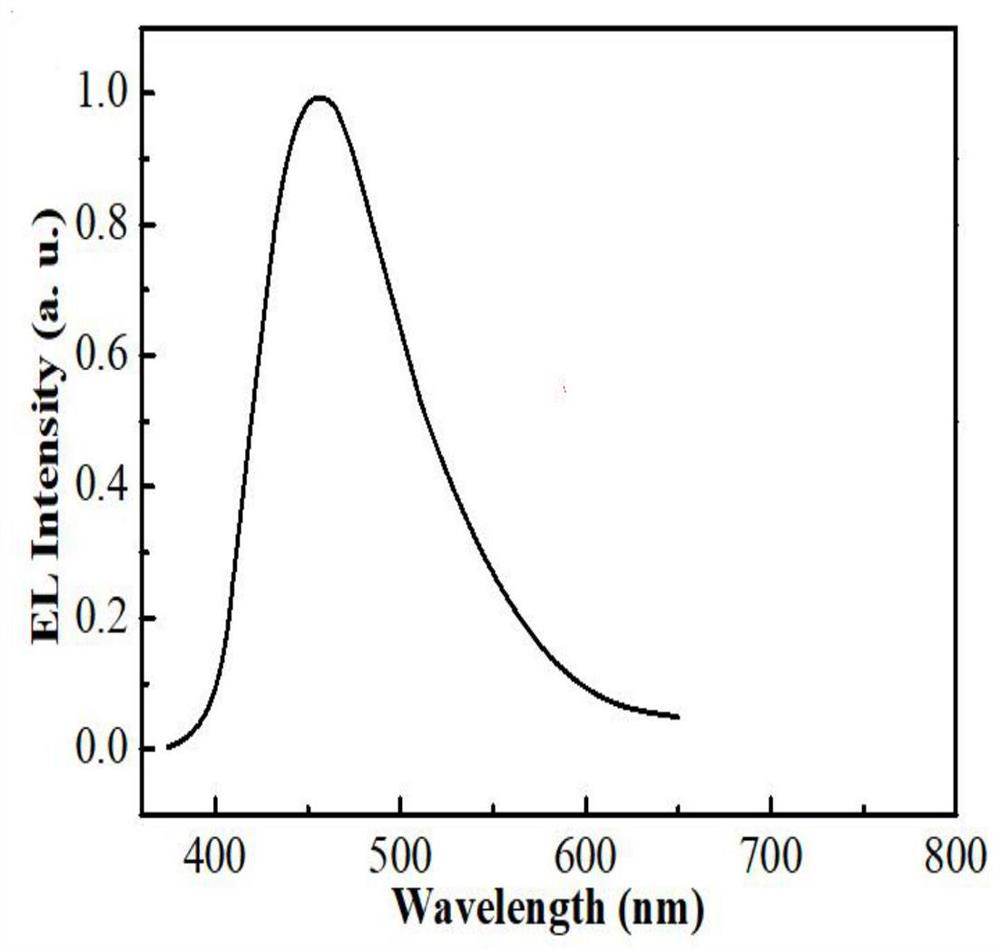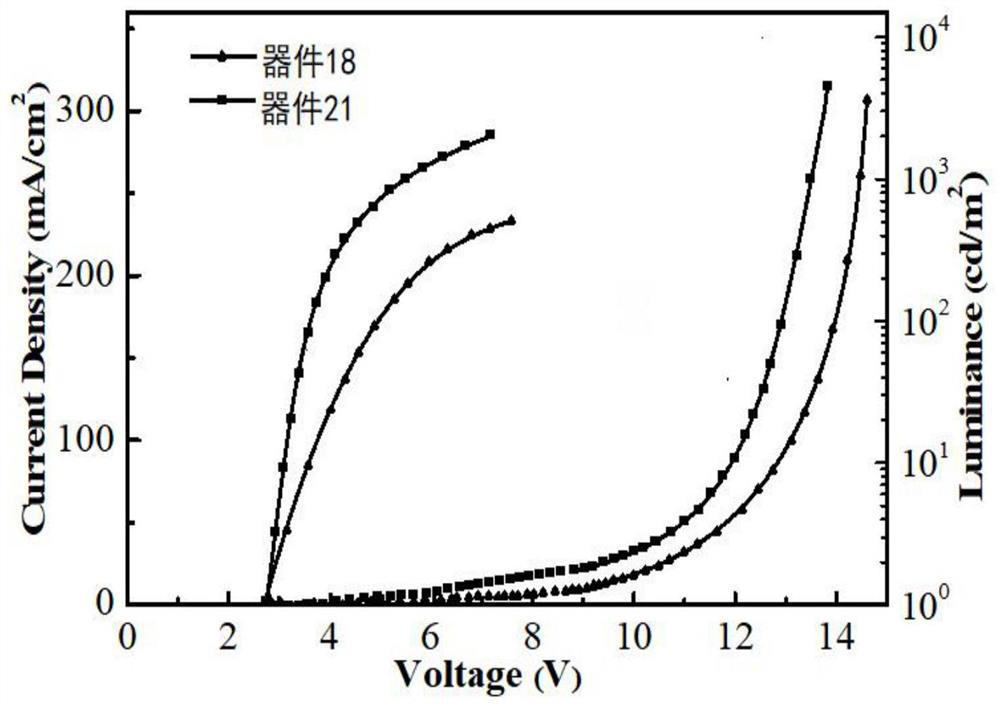Triarylamine derivatives and their preparation methods, applications and devices
A technology of triarylamine and derivatives, which is applied in the field of triarylamine derivatives and their preparation, can solve the problems of low light extraction efficiency, and achieve the effects of high hole mobility, large commercial value, and good thermal stability
- Summary
- Abstract
- Description
- Claims
- Application Information
AI Technical Summary
Problems solved by technology
Method used
Image
Examples
Embodiment 1
[0069] The compound (3) described in the present invention can be synthesized by the following method.
[0070] 1) In a 500ml three-necked flask, add N-phenylnaphthalene-2-amine (21.93g, 100mmol), 4'-bromo-4-iodobiphenyl (35.90g, 100mmol), toluene (200mL) and tert-butanol Sodium (28.83g, 300 mmol), the air was removed by ultrasonication, under the protection of nitrogen, palladium acetate (0.07g, 0.3mmol) and tri-tert-butylphosphine (0.18g, 0.6mmol) were added, and the reaction was heated under reflux at 115°C for 24 hours , TLC monitoring reaction is completed;
[0071] 2) After cooling to room temperature, wash with water twice, separate the liquids, dry the organic phase with anhydrous magnesium sulfate, filter, add activated carbon to the filtrate for decolorization at 115°C for 45 minutes, heat filter, and distill and concentrate the filtrate under reduced pressure with ethyl acetate The ester was recrystallized twice to finally obtain the intermediate N-(4'-bromo-[1,1'-...
Embodiment 2
[0075] The compound (12) described in the present invention can be synthesized by the following method.
[0076] 1) In a 500ml three-necked flask, add N-phenylpyridin-4-amine (17.02g, 100mmol) and 4'-bromo-4-iodobiphenyl (35.90g, 100mmol), toluene (200mL) and tert-butanol Sodium (28.83g, 300 mmol), ultrasonically remove the air, under the protection of nitrogen, add palladium acetate (0.07g, 0.3mmol) and tri-tert-butylphosphine (0.18g, 0.6mmol), heat and reflux at 115°C for 24 hours , TLC monitoring reaction is completed;
[0077] 2) After cooling to room temperature, wash with water twice, separate the liquids, dry the organic phase with anhydrous magnesium sulfate, filter, add activated carbon to the filtrate for decolorization at 115°C for 45 minutes, heat filter, and distill and concentrate the filtrate under reduced pressure with ethyl acetate The ester was recrystallized twice to finally obtain the intermediate N-(4'-bromo-[1,1'-biphenyl]-4-yl)-N-phenylpyridin-4-amine 3...
Embodiment 3
[0081] The compound (22) described in the present invention can be synthesized by the following method.
[0082] 1) In a 500ml three-necked flask, add 9-phenyl-N-(4-methylphenyl)-9H-carbazol-3-amine (34.84g, 100mmol) and 4'-bromo-4-iodobiphenyl (35.90g, 100mmol), toluene (200mL) and sodium tert-butoxide (28.83g, 300mmol), ultrasonically removed the air, under the protection of nitrogen, added palladium acetate (0.07g, 0.3mmol) and tri-tert-butylphosphine (0.18 g, 0.6mmol), heated to reflux at 115°C for 24 hours, and TLC monitored the completion of the reaction;
[0083] 2) After cooling to room temperature, wash with water twice, separate the liquids, dry the organic phase with anhydrous magnesium sulfate, filter, add activated carbon to the filtrate for decolorization at 115°C for 45 minutes, heat filter, and distill and concentrate the filtrate under reduced pressure with ethyl acetate The ester was recrystallized twice to finally obtain the intermediate N-(4'-bromo-[1,1'-b...
PUM
 Login to View More
Login to View More Abstract
Description
Claims
Application Information
 Login to View More
Login to View More - R&D
- Intellectual Property
- Life Sciences
- Materials
- Tech Scout
- Unparalleled Data Quality
- Higher Quality Content
- 60% Fewer Hallucinations
Browse by: Latest US Patents, China's latest patents, Technical Efficacy Thesaurus, Application Domain, Technology Topic, Popular Technical Reports.
© 2025 PatSnap. All rights reserved.Legal|Privacy policy|Modern Slavery Act Transparency Statement|Sitemap|About US| Contact US: help@patsnap.com



